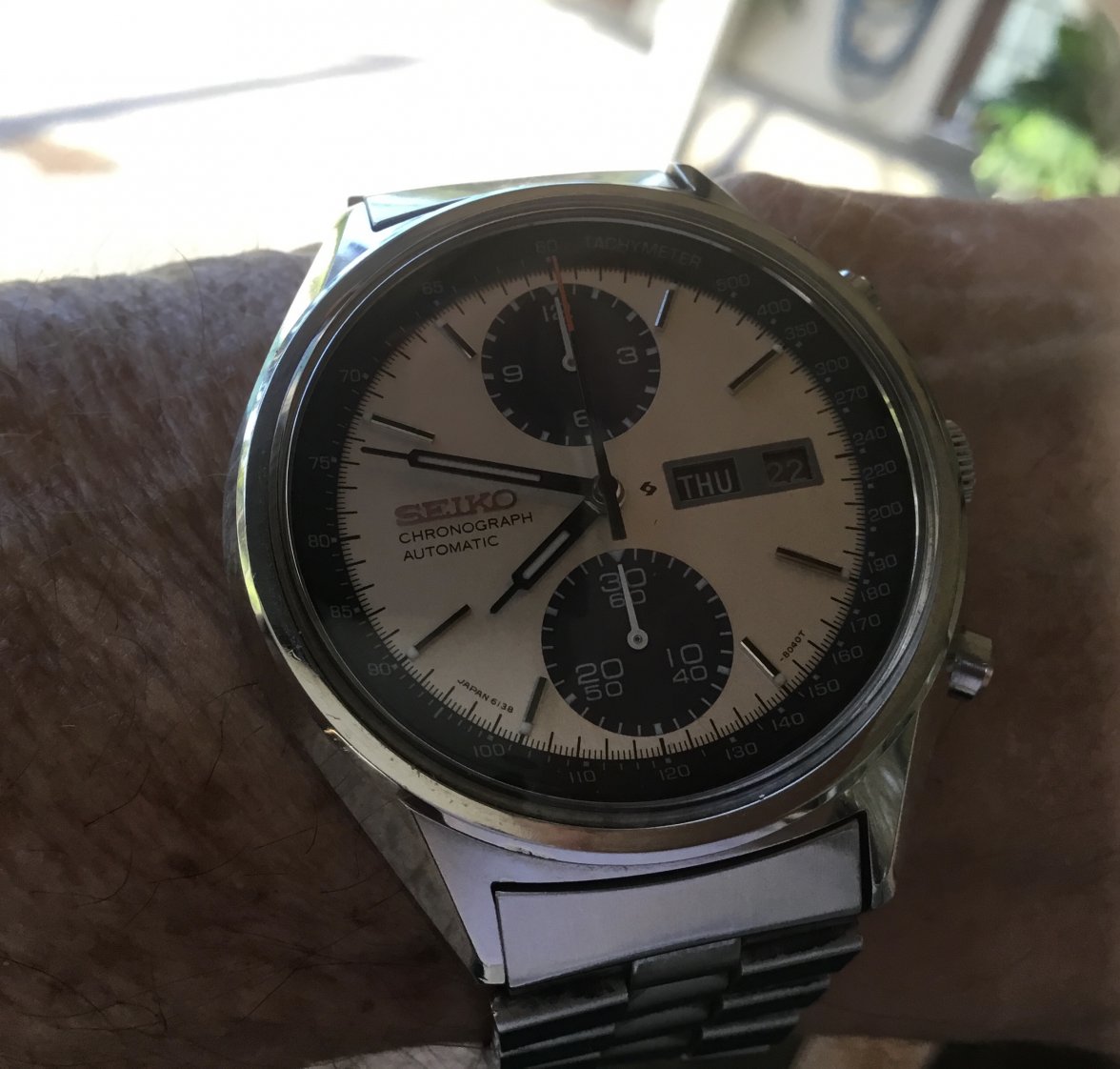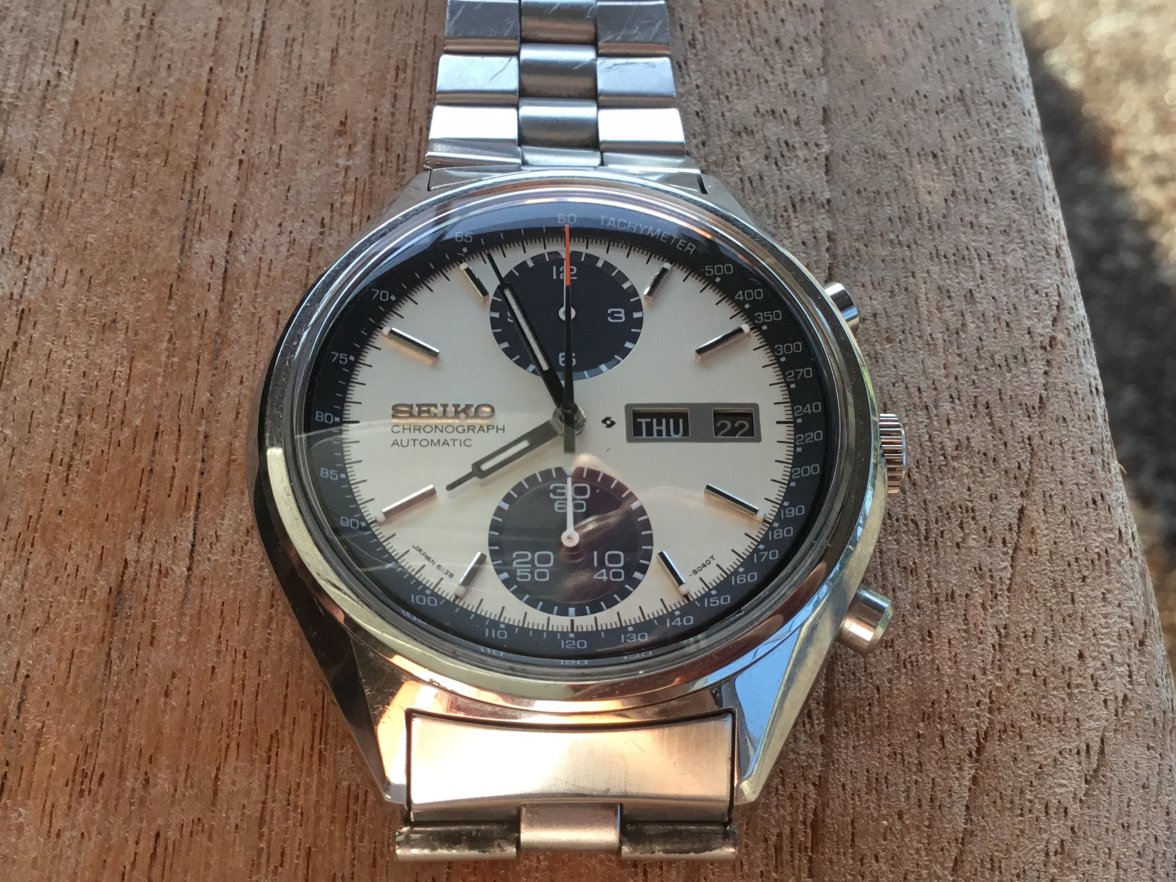- Posts
- 69
- Likes
- 518
FL-Frank
·My new (to me) Panda arrived last evening. A very clean example, circa 1977. Although I’m no expert, it appears to be a correct, original example. Unfortunately, the lumed hands and indexes no longer illuminate…which is surprising as the original lume on my 1969 Omega Constellation still functions…albeit not very brightly.
Edited:

